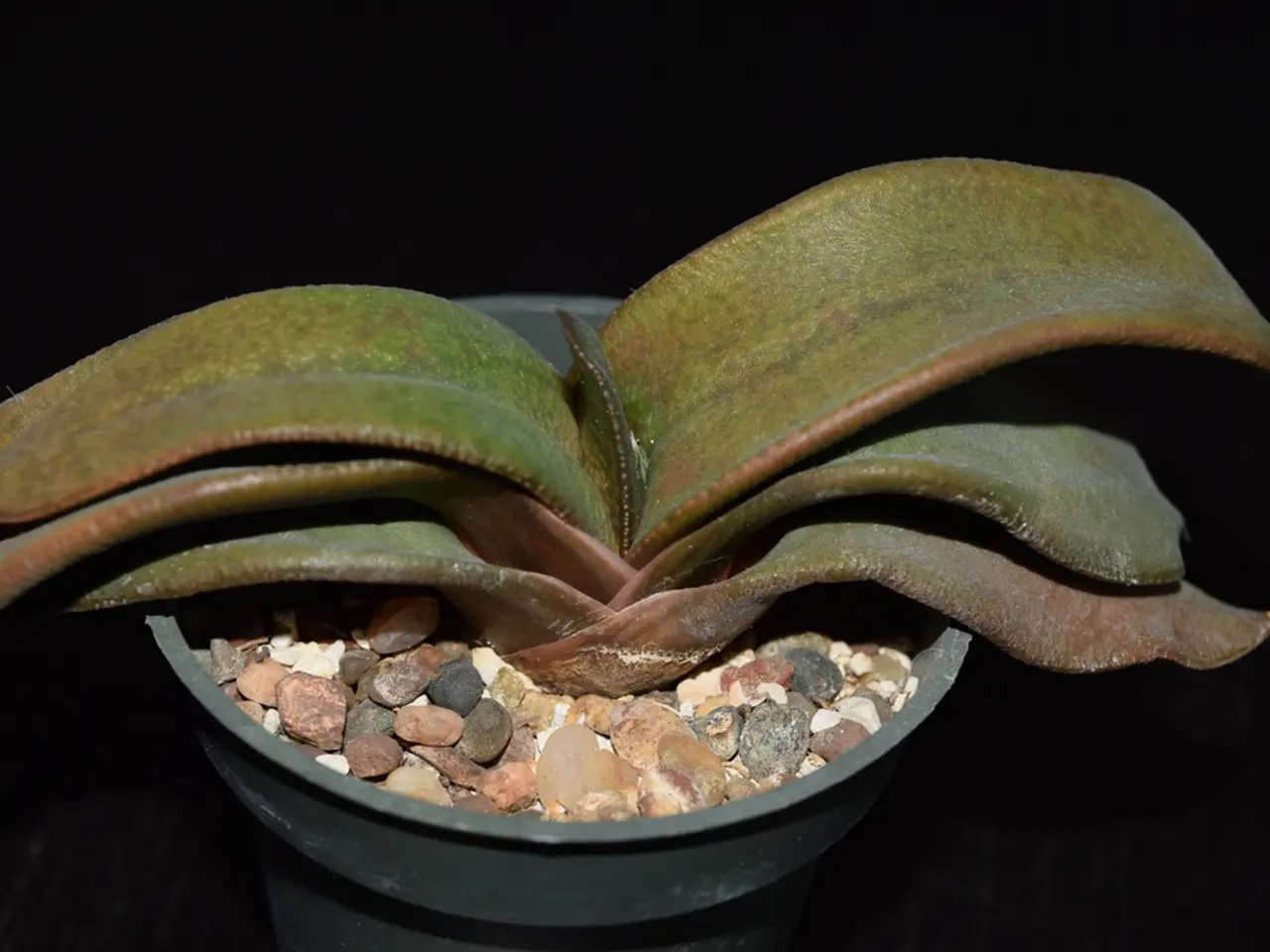Guidance on Jade Plant Maintenance: Extracting from Potting Mix
Repotting Your Jade Plant: A Step-by-Step Guide
Repotting your jade plant is a simple yet essential task to ensure its continued growth and health. Here's a step-by-step guide to help you through the process.
- Preparation
- Water your jade plant a few hours before repotting to help loosen the soil.
- Loosening the Root Ball
- Gently tap or squeeze the current pot to free the roots. If the plant is stuck, run a butter knife or other flat tool around the inner edge of the pot and remove any roots stuck to the walls.
- Removing the Plant
- Carefully grasp the base of the jade plant and lift it out of the pot.
- Cleaning the Roots
- Knock away or shake off old soil around the roots, making sure to remove any rotten or dead roots. Treat any visible cuts on the jade plant roots with a fungicide.
- Inspection and Trimming
- Inspect the roots for any signs of damage or rot. Trim away any affected areas.
- Potting the Jade Plant
- Choose a new pot that is slightly larger than the old one, with a size increase of one size usually appropriate. A four-inch or six-inch pot with drainage holes is suitable for smaller jade plants, while larger plants may require a heavier pot to prevent toppling.
- Place a layer of fresh, well-draining succulent soil mix into the new pot.
- Positioning the Jade Plant
- Position the jade plant in the center of the new pot at the same depth as before, then fill in around the roots with fresh soil, pressing gently to remove air pockets.
- Settling In
- Allow the repotted jade plant to settle into the new soil for about a week before watering it again.
- Nourishment
- Add a couple of handfuls of compost to the soil for extra nourishment.
- Placement
- Place the repotted jade plant in a bright location with access to natural light.
Jade plants prefer to be kept relatively dry when repotting, so some recommend watering them 7-14 days beforehand but still allowing the soil to dry out somewhat before handling to reduce stress.
Using a stable pot like clay is ideal due to the jade plant's heavy crown, but plastic or ceramic pots with drainage holes also work well.
This process replenishes nutrients, improves drainage, and provides more root space to promote healthy growth. Remember to avoid aggressively breaking apart the roots, as this can damage or stress the plant unnecessarily; loosening the root ball just enough to remove old soil is sufficient.
Jade plants can be repotted in grow pots, terracotta, fiberglass, resin, concrete, or ceramic pots with drainage holes. Position the jade plant deeply in the new pot without the leaves touching the soil.
By following these steps, you can ensure a successful repotting experience for your jade plant. Happy gardening!
[1] Jade Plant Care: Repotting [2] Repotting a Jade Plant [3] How to Repot a Jade Plant [4] Repotting a Jade Plant
Read also:
- Education Exhibition: August 2024 Display and Demonstration
- Enhanced solar power for 600-watt power stations: the BOOSTER unit offers an upgrade.
- Revolutionizing healthcare through Remote Patient Monitoring Systems: A life-changing approach!
- What's the Ideal Lighting for Your Coral Culture in the Aquarium?




